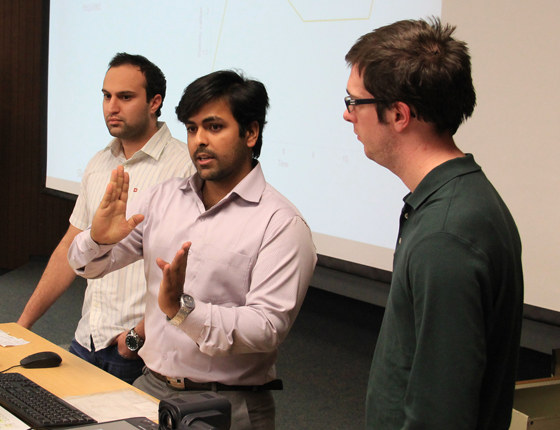Studying the mechanics of aerospace engineering without putting them into practice is like writing a recipe for a cake and never actually baking it.
That, said Scott Miller, professor of aerospace engineering, is the big difference between Wichita State University’s AE program and the programs available at other schools.
WSU’s aerospace engineering senior design class gives students the opportunity to build a small aircraft from start to finish. They design, build and test the prototype, and at the end of the year have produced an unmanned air vehicle.
“The faculty, staff and alumni are invested to challenge us in our design work so that we succeed in our missions,” says senior Amy Fitzpatrick.
The support from faculty is essential to their success, as Miller says it is one of the hardest courses students will take.
“For many students, this course is the most traumatic and challenging- -but also the coolest course they’ve taken,” Miller said. “It’s their baby. Their blood, sweat and tears have gone into it.”
The senior design project allows students to look at the massive capabilities of the vehicles they are creating. They can evaluate both the positive and negative impact they can have.
Miller’s favorite aspect of the course is that it brings the students full circle. They start the course with a rough idea, setting goals for what they hope their aircraft will accomplish. This groundwork helps inform the design of the vehicle. They spend weeks planning the intricate details of how each piece will fit together, before they even begin working on the physical object.
Technological growth
Miller discusses the many advances to the program in recent years, mainly due to the rapid increase in technology. Items such as GPS modules used to cost up to $300 and can now be found in compact sizes at a fraction of the cost.
A big challenge with these advancements is the ease with which people can design their own unmanned air vehicles. Remote control airplanes have been a common hobby for the last 50 years, but with the increase in availability, people want more restrictions on what can be done with them.
“The public has bizarre perceptions of what drones are,” said Miller.
Drones have progressed from wind-up toys to fully autonomous machines and people are hesitant to embrace the rapid progression.
Some major challenges are understanding what can and cannot be done. A big hindrance to the progress of technology in the field of unmanned air vehicles is people doing unwise things with the technology available to them, Miller says.
Miller references stories of people flying personal drones over forest fires, stadiums and other restricted areas. His worry is that people making unwise decisions will affect the regulations for everyone else and have a negative influence on progress.
“(Drones) have the ability to do so much,” said Miller. “They can get in places and see things people can’t.”


 Tim Hart
Tim Hart